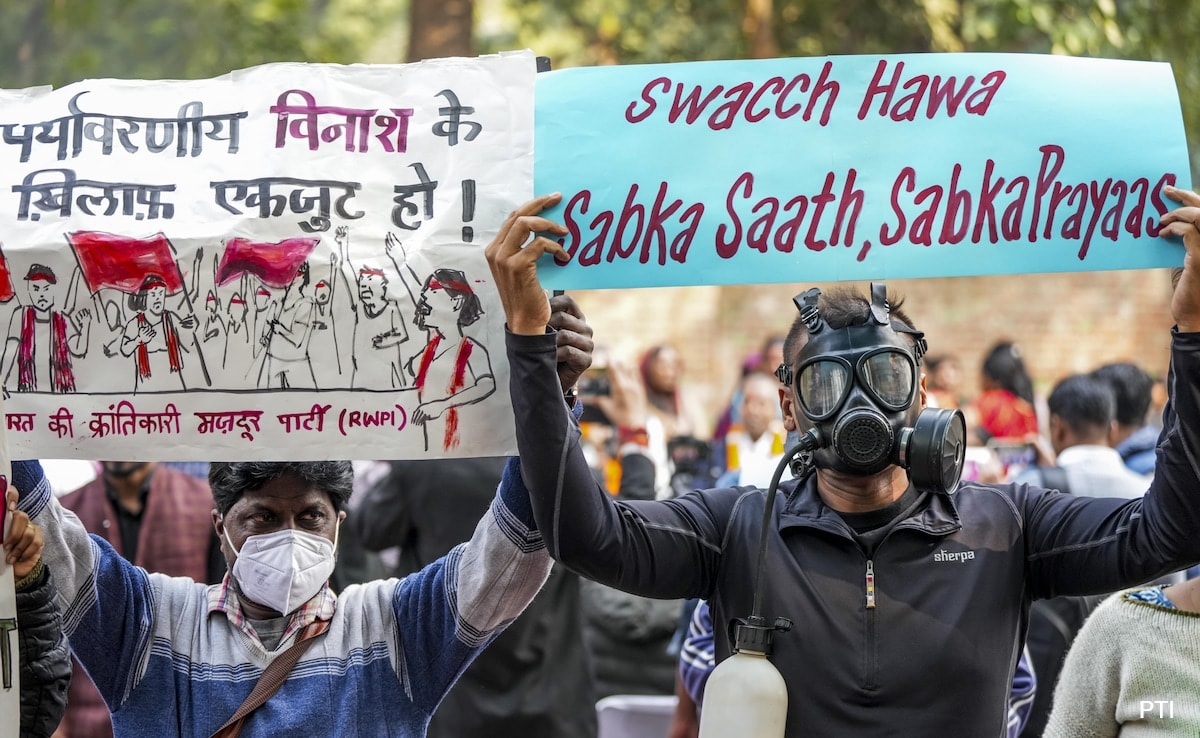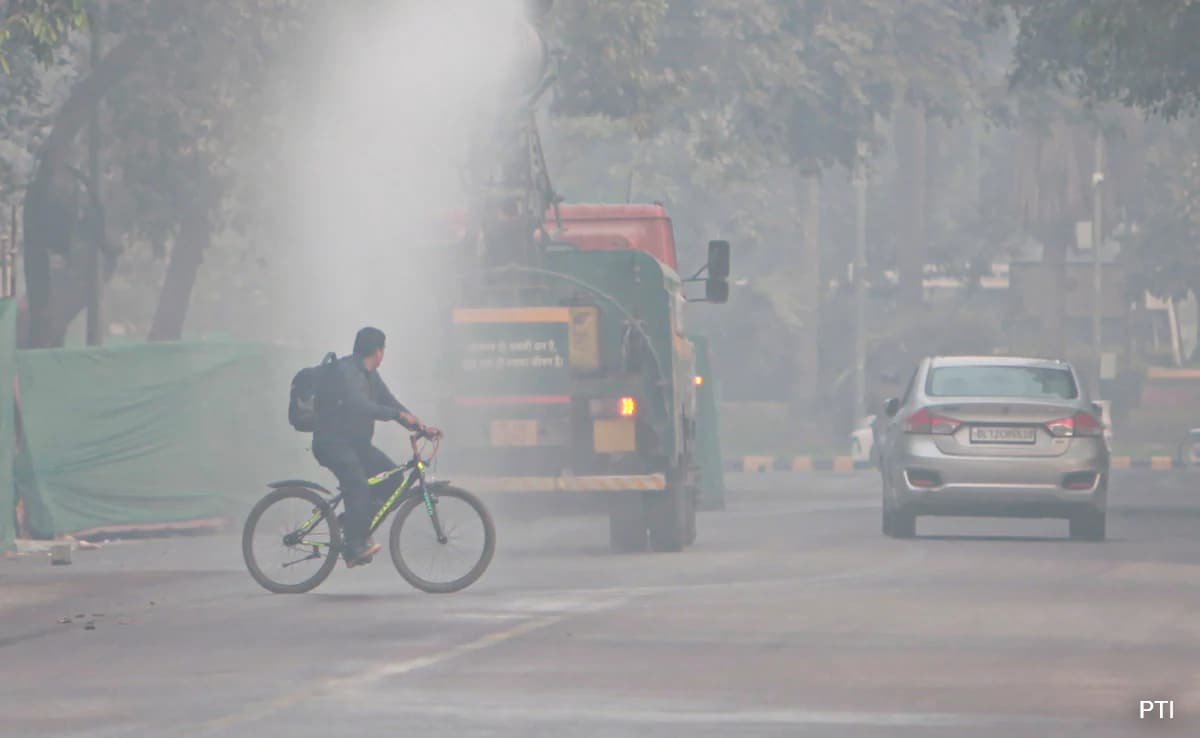
In the heart of Delhi, at a spot popular for picnics in Delhi's crisp winter, a group of protestors are demanding their right to breathe freely.
"Why, as a parent, am I being forced to make a choice between the right to education and the right to health for my son every day?" asks a mother protesting against air pollution at Jantar Mantar, a big tourist draw in the city. "I have normalised the idea of a mask for my child," she adds.
IQAir, a Swiss air-quality monitoring company, clocked Delhi's air quality index (AQI) at a staggering 506 on Wednesday at 7 am. However, India's Central Pollution Control Board (CPCB) reported a lower AQI of 399, falling under the "very poor" category.
This raises the question, why are official AQI readings so different from what independent monitors or their own devices show? And which one to believe?
Here's the catch - both readings are correct, but for different reasons.
Also Read | Explained: 350 vs 1,100, CPCB vs IQAir, Who Has Got Delhi's AQI Right
What Is AQI?
The AQI is a public health tool designed to communicate air pollution levels or the quality of air in simple terms. Eight pollutants namely particulate matter (PM) 10, PM2.5, Ozone (O3), Sulphur dioxide (SO2), nitrogen dioxide (NO2), carbon monoxide (CO), lead (Pb) and ammonia (NH3) act as major parameters in deriving the AQI of an area, as per the CPCB.

"AQI is a calculated index based on different parameters. It is for common man's understanding of air quality," explained Mohan George, Consultant at the Centre for Science and Environment. "AQI has different color-coded ranges simply to tell the citizens that air is good or satisfactory or very poor and what they should be doing," George, also former Additional Director at Delhi Pollution Control Committee, added.
For example, an AQI between 401 and 500, or in the 'severe' category, is hazardous even for healthy people, and one should avoid going out or exercising in the open.

Concentration vs AQI
Air quality monitoring stations provide concentration values of different pollutants - particulate matter and gases. Explaining how AQI is calculated from the concentration, George said, "AQI for a given day is computed using air quality data from the previous 24 hours. The average concentrations of each pollutant are calculated and fed into a formula to generate their respective sub-indices. The highest of these sub-indices determines the overall AQI. For instance, if PM2.5 has a sub-index of 400 and ozone is 300, the AQI becomes 400 because we take the worst sub-index."
Eight pollutants are considered while calculating the AQI. In India, a concentration value of minimum three pollutants, one of which must be a particulate matter, is essential to derive the AQI.
"In the Indian and broader Asian context, dust plays a major role. Therefore, particulate matter (either PM2.5 or PM10) remains the dominant pollutant across North India, most of the time," George added.
Blog | Well Done, Delhi. You've Turned Lung Sacrifice Into A Badge Of Honour
WHO vs India: Different Threshold Of Safe Levels
The Central Pollution Control Board (CPCB) considers 60 micrograms per cubic meter of PM2.5 as safe for a 24-hour average. The World Health Organization (WHO), however, has set a much stricter limit of 15 micrograms.
But these are pollutant concentration values, not AQI so they can't be directly compared with the Air Quality Index numbers that the government releases.

An anti-smog gun sprays water droplets to curb air pollution, in New Delhi.
Why Is There A Difference In AQI?
India's AQI scale is capped at 500. Meaning, AQI beyond 500 will be grouped under the "severe" category, indicating a public health emergency.
The CPCB categorises AQI into six parts: 0-50 is considered 'good', 51-100 'satisfactory', 101-200 'moderate', 201-300 'poor', 301-400 'very poor', and between 401-500 'severe'.
"AQI above 400 is hazardous. It is assumed that the health impacts are similar at AQI 500 and AQI 900, so why show a higher number and create panic among people," says Professor Dr Gufran Beig, Chair Professor at the National Institute of Advanced Studies (NIAS).
Also Read | As Delhi Chokes, AIIMS Doctor Says Masks Won't Help
However, there is no scientific justification for capping AQI at 500 despite the ability to calculate higher values, said Sunil Dahiya, Founder and Lead Analyst at Envirocatalysts.
"While it is true that long-term impacts are higher at lower concentration exposures and increase marginally at very high concentrations, but the immediate threats are way higher, leading to hospitalisation and medical emergencies for heart and respiratory patients and sensitive groups whenever pollution levels go way too high as observed during peak stubble burning episodes and around Diwali," added Dahiya.
There's also a difference in data sources. CPCB relies on reference-grade monitors that provide calibrated data, explains George.
IQAir, on the other hand, aggregates data from both government stations and low-cost sensors installed by companies and individuals.
However, experts suggest looking at AQI labels like "severe" or "hazardous," or at pollutant concentrations, and taking protective health measures accordingly.
"Inhaling air at an AQI level of 500 is hazardous. If it rises to 900, it remains hazardous. It's comparable to consuming something, be it one spoon or two, it's still dangerous," George concludes.
Track Latest News Live on NDTV.com and get news updates from India and around the world

